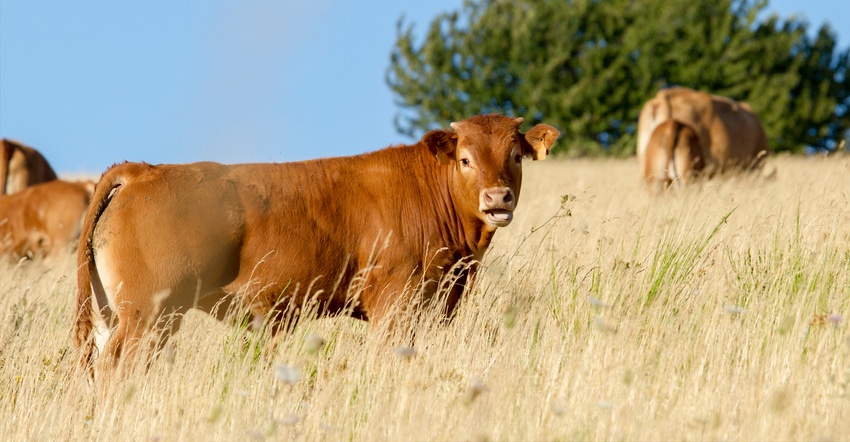
Of the 20 million acres of winter wheat planted annually in Kansas, Oklahoma and Texas, about 8 million acres provide late-fall and winter pasture for cattle.
"The southern Great Plains are able to do this because the winter weather is relatively warm and the wheat continues to grow slowly even in dormancy," says Romulo Lollato, Kansas State University Extension wheat and forage specialist.

Romulo Lollato
The wheat grazing season is between 120 and 150 days, depending on time of planting, he says.
Winter wheat provides between 2,000 and 4,000 pounds of dry forage per acre in the fall, depending on the environmental difference and which variety of wheat is planted. The high-quality forage has the advantage of being available from November through February or March, when very few other forages are growing.
It has good neutral detergent fiber percentages ranging from the mid-40s to mid-50s, Lollato says. Acid detergent fibers range from 20% to over 30%, while protein concentration ranges from 10% to 30% and digestibility is 60% to 80%.
Many producers who graze wheat also plan to harvest a grain crop in the summer, and the pasture must be managed carefully to avoid a negative impact on grain yields, he explains.
Grazing can delay maturity of the crop by one to four days, which can offer the disadvantage of higher temperatures during grain fill, but also the advantage of avoiding damage from a spring freeze. In years with favorable weather, grazing can result in a decreased number of tillers. In drought, fewer tillers can be an advantage because the crop has less foliage to support.
In field trials from 1999 to 2010 at Marshall, Okla., wheat varieties for dual purpose were planted earlier and at higher seeding rates to ensure adequate growth before first freeze. Dual-purpose plots were sown at 120 pounds per acre in September, while grain-only plots were planted at 60 pounds per acre in October.
The dual-purpose fields had yields 14% lower than the grain fields, Lollato says. Researchers attributed half of the yield loss to grazing and half to the early sowing date.
Several factors affected dual-purpose yields, including management, when grazing was initiated, the intensity of grazing and the date of termination. Soil nutrients and spring weather conditions have had an impact.
Because soils are likely to be hotter and drier if wheat is planted early, there can be problems with seed dormancy, high-temperature germination sensitivity or inadequate coleoptile length.
Wheat seed dormancy is highest right before harvest, a trait that prevents preharvest sprouting. Dormancy is lost gradually over time, but sowing early means less time between harvest and planting and can be a problem. Dormant seed will not germinate.
Wheat prefers a soil temperature between 54 and 77 degrees F and won't germinate if soil is too hot. Often a rain that cools the soil solves that problem. Lollato advises farmers planning to plant a dual-purpose crop to study the varieties available and choose one with lower high-temperature sensitivity.
The coleoptile is the protective structure that covers the emerging shoot. It pushes through the soil and stops growing when it reaches the soil surface, allowing the first true leaf to emerge. If it is not long enough, it stops growing before reaching the surface, and the first true leaf emerges below the soil and often lacks the strength to push through.
Lollato says soil fertility is critical in dual-purpose wheat management. Soil pH should be between 4.0 and 5.0. In-furrow banding of phosphorus and the addition of about 30 pounds of nitrogen per acre more than on grain-only fields is recommended.
"You'll also need to top-dress with nitrogen in the spring before jointing," he advises.
Cattle should not be turned on wheat pasture until the secondary root system that anchors the plant to the ground has formed. Usually that is when the top growth is about 6 to 8 inches, Lollato says, but he advises making sure by pulling up a couple of plants to examine the root structure.
Cattle should be removed from wheat pasture before first hollow stem, which will about half an inch long and just below the developing head. To check, pick a plant from the ungrazed area of the field and split the largest tillers open lengthwise.
Yield reduction from grazing past this time is dramatic, from 1% to 5% per day.
"Timing of terminating grazing is absolutely vital," Lollato says.
About the Author(s)
You May Also Like




